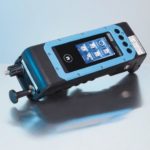Firmen im Artikel
In processes in the chemical industry, safety and efficiency go hand in hand. This is why the process control functions are almost always based on electronic measuring instruments such as pressure transmitters. In order to determine whether the monitoring instrument is doing its job properly and with the necessary precision, it must be calibrated regularly. However, even if the instrument check is not required to be DAkkS compliant, calibration processes can often be a time consuming affair. Inspections in an external laboratory result in significantly more downtime because apart from anything else, the instruments have to be shipped there and back again.
On-site calibration
A growing number of firms today choose on-site calibration for this reason. One German chemical company, for instance, adopted this approach for a multi-purpose plant in its agricultural segment. Amongst other things, the plant, whose various sections can be flexibly interconnected depending on the process, is equipped with more than 200 pressure transmitters. Since the operator feeds it with different, frequently changing media, the pressure measuring instruments require regular calibration. Such checks are carried out before and after every process. By comparing key parameters, it is possible to verify the measurement quality throughout the process. If a production process lasts for a very long time, the transmitters are also calibrated in-between as a kind of functional check.
A considerable amount of equipment is generally necessary for conventional on-site calibration. Apart from the actual calibrator, this entails a means for producing the pressure as well as – in the case of transmitters – a power source. Handling such a wide range of devices is not only complicated; it also costs time and holds many unknowns due to the numerous manual activities.
Against this background, the above-mentioned company decided to check the pressure transmitters using Wika’s CPH7000 portable multi-function calibrator, which combines all the equipment needed for the on-site calibration process in one instrument. In addition to a highly precise reference (0.025 % FS), it also features an electrical voltage and current supply module, so that the values can be read out automatically, and a mechanical pressure pump.
Hand-helds with Atex approval
The intrinsically safe calibrator version required for this application is Atex approved (Ex ib IIC T4 Gb classification). This rules out any risk of explosion, regardless of whether the ignition temperature is reached because a surface overheats, an ignition spark is produced owing to static charge on the case or a fault occurs during electrical operation.
A more complex design compared to other hand-helds was necessary to obtain this approval, especially where the battery was concerned. The capacity of the CPH7000’s “powerhouse” must match the instrument’s multi-functionality and enable eight hours of operation as a minimum. The lithium-ion cell is specially cast in a protective sheath, which prevents overheating in the event of
a short circuit or other fault, so that the battery cells are neither destroyed nor can they leak.
An emergency interrupt function limits the power if it rises excessively. The battery never supplies more than the maximum 24 mA of current and 30 V of voltage which are output via the integrated electronic module. An additional safety cutout feature was installed as a condition of the Atex approval.
The test pressure needed for calibration can only be produced using a hand pump because electrical alternatives would not meet the Atex requirements for explosion protection. There were two other reasons why a mechanical component was integrated: the battery power is protected and the final value is approached faster owing to the larger stroke. The hand pump has Atex compliant conductivity: all metal parts are permanently connected to one another, so that they cannot become charged. This simultaneously prevents matchstick effects due to friction from trapped particles such as chips. Furthermore, the pump’s piston-cylinder system is fine-tuned so that there is virtually no self-heating during pumping.
The CPH7000 and the calibration processes are parameterised and controlled on an intuitive touch screen similar to a smartphone. The big GUI permits easy navigation. It is made from shatterproof glass because it could otherwise break if the instrument were to be dropped, resulting in exposed electrical cables in the hazardous area. More severe impacts than a simple fall might cause the screen to splinter, but it would still form a closed surface.
The pressure transmitters in the multi-purpose plant are calibrated on site with the CPH7000: the measuring instruments are integrated in the process by means of monoflanges with an Ermeto coupling as the test connection. An external CPT7000 reference sensor is mounted to the coupling for the duration of the test. It is supplied with the same pressure as the transmitter and transfers the value to the calibrator as a digital signal. The result of the calibration is instantly recognisable: it appears in a green frame if the test item meets the class accuracy or in a red frame if it does not.
Other testing tasks
Although calibrating pressure measuring instruments is the most important of the CPH7000’s functions, this portable device can also carry out other testing tasks in a single step, for example those linked to voltage and current with the electrical module. Switch tests and sensor simulations are just two possibilities here. Temperature measuring points can also be checked with the help of an Atex approved Pt100 sensor. An external atmospheric module and an integrated barometer moreover provide information on atmospheric pressure, relative humidity and ambient temperature. Due to its small surface, this module in miniature format does not require an intrinsically safe design. A data logger stores all measured values and parameters for documentation purposes. The logger also shows pressure and temperature cycles on a live graph in real time, so that any deviations are detected immediately. The CPH7000 is thus equally suited for leak-testing.
The data recorded by the calibrator can be transmitted wirelessly to a host computer or a notebook for further processing. In the opposite direction, calibration routines can be uploaded in this way, so that testing processes in sensitive areas are even safer. If the CPH7000’s “partner” device is within the range for Bluetooth, operators can transmit all relevant information without even leaving the hazardous area.
Wika SE & Co.KG, Klingenberg











